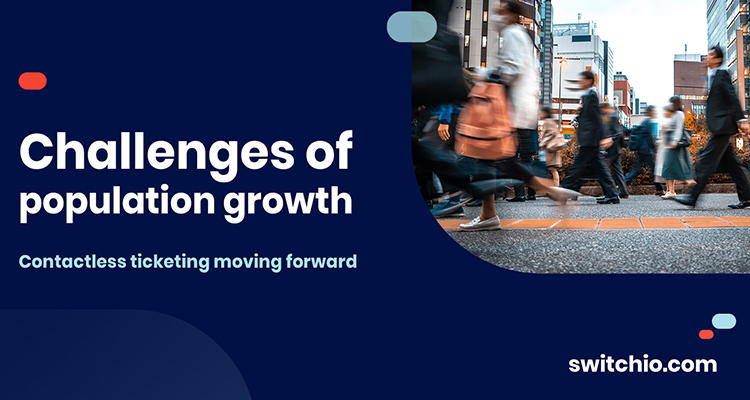Population growth and public transport: what is the future of ridership?
- Like
- Digg
- Del
- Tumblr
- VKontakte
- Buffer
- Love This
- Odnoklassniki
- Meneame
- Blogger
- Amazon
- Yahoo Mail
- Gmail
- AOL
- Newsvine
- HackerNews
- Evernote
- MySpace
- Mail.ru
- Viadeo
- Line
- Comments
- Yummly
- SMS
- Viber
- Telegram
- Subscribe
- Skype
- Facebook Messenger
- Kakao
- LiveJournal
- Yammer
- Edgar
- Fintel
- Mix
- Instapaper
- Copy Link
Posted: 13 July 2021 | Switchio | No comments yet
As the world continues to grow and urbanise, many cities will face transportation challenges. How can cities effectively manage the moving of large masses of people from one place to the next?


Growth pressure on cities translates to growing pressure on public transport
According to this UN population profile, there will be more than 10.5 billion people in the world in 2075, compared to 4.2 billion people in 2018. By 2030, the world is projected to have 43 megacities with more than 10 million inhabitants, and by 2050 more than two-thirds of the world’s population will live in urban areas.
Population growth in urban areas will lead to greater pressure on public transport infrastructure. Residents of big cities will expect public transport that is fast, efficient, affordable, safe and environmentally friendly. Delivering such transport will be one of the key challenges confronting cities of the future.
The future of bank cards and fare collection systems
Bank cards, first issued by Barclays in London in 1967, have become an integral part of our daily transactions. And with advancements in contactless technology, today we can pay with contactless bank cards almost anywhere in the world.
According to data published by SHIFT credit card processing, there are currently 2.8 billion credit cards in use worldwide. Research among American consumers has found that 70 per cent have at least one credit card and 60 per cent believe that the US will soon become a cashless society. What does this trend towards going cashless mean for public transit agencies? How can they use it to their advantage in light of increasing urbanisation?
Using bank cards to pay for tickets in vending machines will not be enough due to the large volume of anticipated travellers and the slow check-in process inherent in using a vending machine. To facilitate fast check-in for large volumes of travellers, transit agencies will need to bring contactless card payment options to their vehicles. These options are already common in many cities around the world, including Ostrava, Tychy or Lagos.
How can contactless ticketing assist public transport agencies in delivering fast and efficient services?
Open-loop contactless bank card acceptance directly in vehicles or turnstile as well as advanced fare media can bring traffic relief to crowded cities.
The benefits of such contactless payment systems include the following:
- Contactless EMV payment platforms with a transaction processing time of fewer than 0.5 seconds greatly accelerates passenger check-in
- Thanks to a PCI DSS terminal management system, providers can monitor cash flow, the number of taps, and usage rate on each terminal
- Tokenisation and high platform security prevent misuse of sensitive bank card data and terminal hacking
- Transport operators gain the freedom to choose an acquirer independently of the type of hardware they use
- The service includes an optimal fare calculation system and daily capping, which calculates the best fare for passengers and saves them money
- There is no need to print tickets or maintain vending machines
If you want to join the digitalisation of public transport and save yourself and your passengers money and time, switch to Switchio. Our payment switch offers all of the benefits outlined above, delivers faster and more comfortable service for passengers, and saves money in the long run. Together we can make public transport greener and smarter.
Related topics
5G & Transport Communications, Cyber-Security, Fleet Management & Maintenance, Infrastructure & Urban Planning, IoT (Internet of Things), Mobility Services, Multimodality, Passenger Accessibility, Passenger Experience, Public Transport, Security & Crime, Ticketing & Payments, Traffic Management, Travel & Passenger Information, Vehicle & Passenger Safety, Workforce Inclusivity
Related organisations
Switchio








